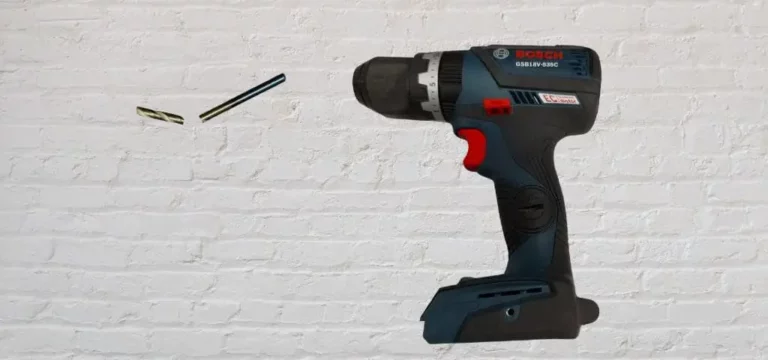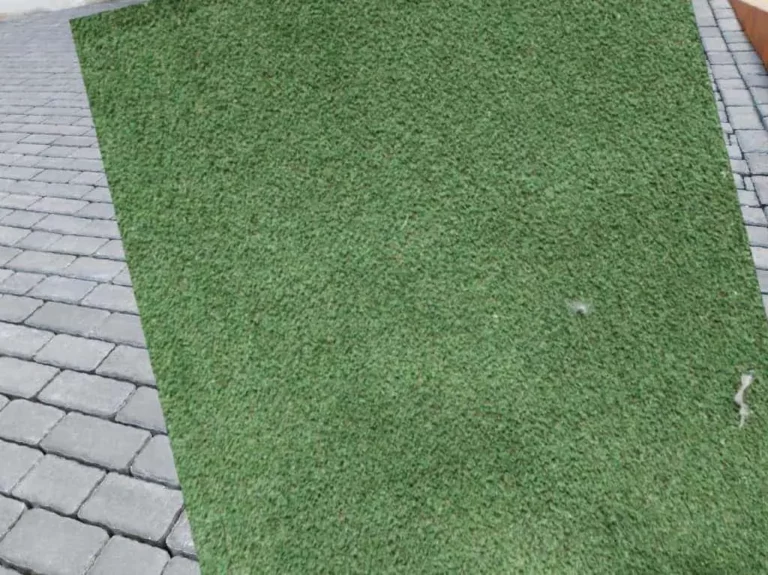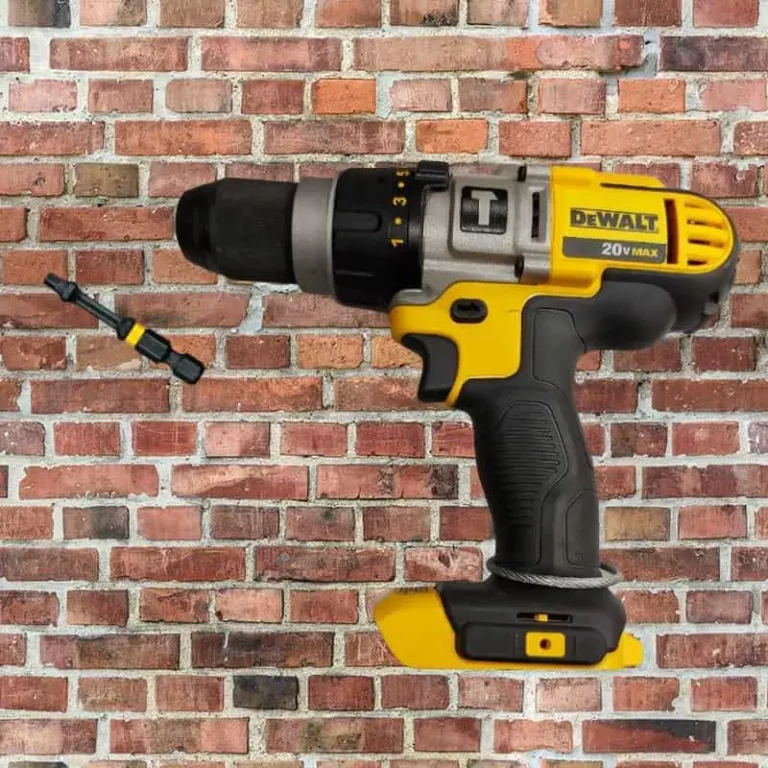When to Replace Your Sump Pump: Age, Wear, & Performance Clues
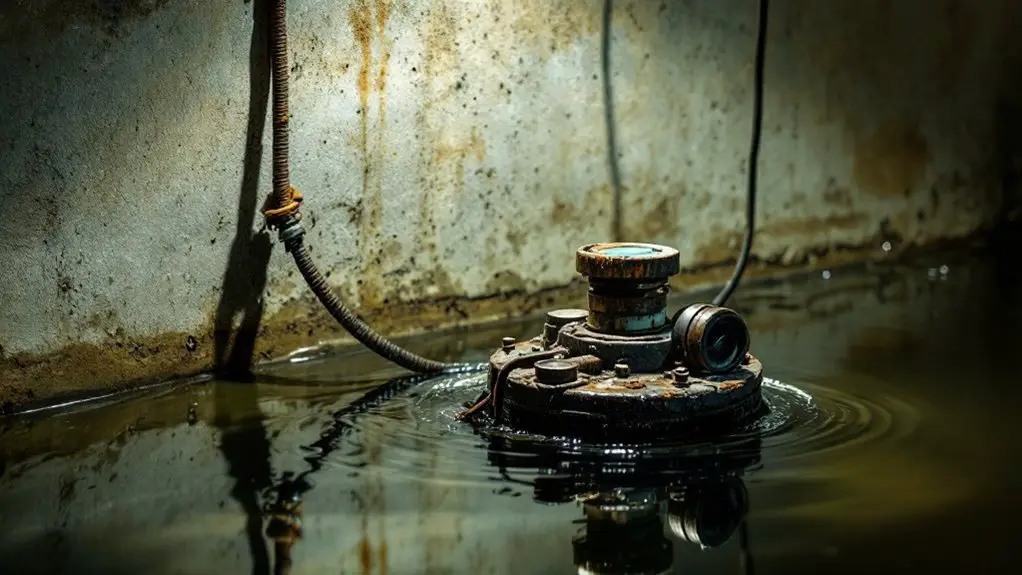
You’ve invested thousands in waterproofing your basement, yet you’re still gambling with an aging sump pump that could fail when you need it most. Most homeowners wait until they’re ankle-deep in floodwater before considering replacement, but your pump’s sending subtle warning signals right now. The question isn’t whether your pump will eventually fail—it’s whether you’ll recognize the critical signs before disaster strikes and your basement becomes an expensive swimming pool.
Understanding Sump Pump Lifespan and Replacement Timeline
Age becomes the silent indicator of your sump pump’s reliability, with most units reaching their operational limits between 7 to 10 years of service. However, some experts recommend considering replacement after just 5 years, especially if your pump works under heavy demand. Your pump’s actual lifespan depends on how frequently it cycles and the water volume it handles.
Frequent cycling and extended runtimes accelerate wear, shortening your pump’s effective life. Surprisingly, limited use can also reduce lifespan as mechanical parts degrade from inactivity. Once your sump pump reaches 7 years or older, you should seriously evaluate replacement to prevent unexpected failures that could lead to costly basement flooding and water damage.
Visible rust on metal pumps signals an immediate need for replacement, as corrosion can lead to motor failure over time even when unseen rust may be present internally.
Recognizing Mechanical Warning Signs and Equipment Failure
Beyond simply tracking years of service, your sump pump will communicate its declining health through specific mechanical warning signs that demand immediate attention. Strange grinding, rattling, or whining noises indicate worn internal components, while excessive vibration suggests misaligned parts. If your pump runs continuously without cycling off, you’re likely dealing with a stuck float switch or jammed mechanism that can cause motor overheating and burnout.
Watch for visible rust and corrosion on the housing, which weakens structural integrity and clogs moving parts. Debris accumulation can block the impeller or discharge pipe, causing your pump to run ineffectively while water levels rise dangerously. When cleaning fails to restore proper drainage and water removal remains ineffective, replacement may be necessary to prevent basement flooding. Electrical issues like frequent circuit breaker trips or burning smells signal imminent failure requiring immediate professional inspection.
Identifying Performance Issues and Operational Problems
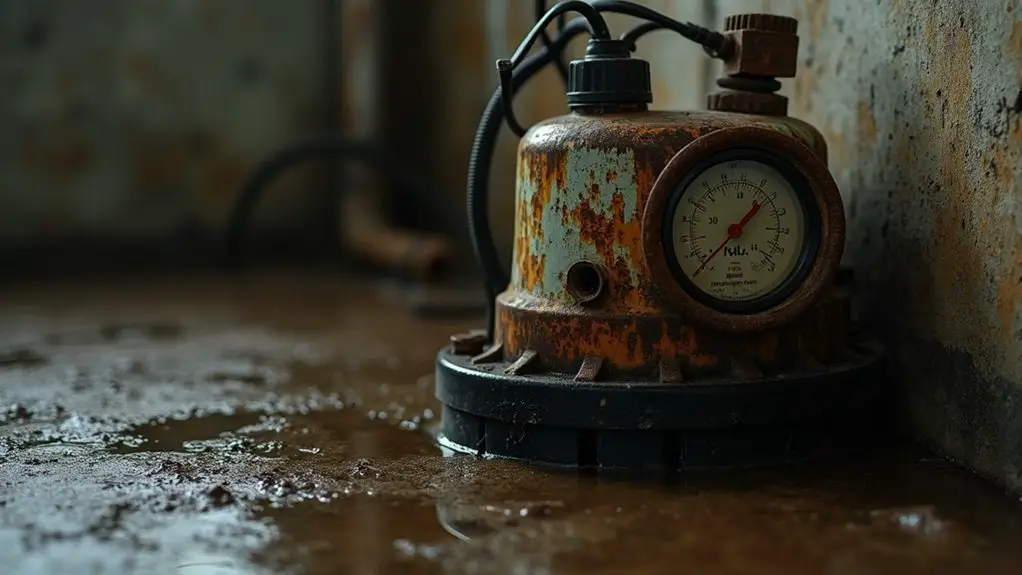
How can you tell when your sump pump’s performance has deteriorated to the point where replacement becomes necessary? Watch for these critical performance failures that compromise your home’s safety. If your pump fails to activate during flooding or runs constantly without shutting off, you’re facing serious operational problems. Water remaining in your basement despite pump activity indicates inadequate capacity or system blockages. Your pump running non-stop during heavy rain signals it’s undersized for your property’s drainage needs, accelerating motor wear and increasing burnout risk. Frequent on-off cycling suggests undersizing or float switch malfunctions. When your pump can’t maintain a dry basement or struggles with normal water volumes, replacement protects your home from devastating flood damage. Additionally, if your pump frequently trips circuit breakers, this electrical issue poses a fire hazard and requires immediate professional evaluation.
Environmental Factors That Accelerate Pump Deterioration
While mechanical wear naturally degrades sump pumps over time, environmental conditions around your home can dramatically accelerate this deterioration process. High groundwater levels force your pump to work constantly, even without rainfall, creating mechanical fatigue through frequent cycling. Poor drainage and improper grading direct excess water toward your foundation, overwhelming your system. Saturated clay soils retain moisture, maintaining persistent water pressure that stresses pump components.
Indoor humidity creates condensation in your sump basin, triggering unnecessary pump activation and false sensor readings. Soil sediment and debris infiltration through drain tiles erode impeller blades and seals. Contaminated runoff introduces corrosive chemicals that degrade pump materials. Additionally, blocked discharge pipes from organic debris force your pump to work harder, leading to overheating and premature failure.
Underground water sources near your property can cause unexpected water influx that creates continuous moisture intrusion even during dry periods, placing additional strain on aging pump systems.
Essential Maintenance Practices for Extended Equipment Life
Understanding these environmental threats to your sump pump highlights the importance of proactive care to combat accelerated wear. You’ll need to conduct monthly visual inspections, checking for rust, corrosion, and unusual noises that signal mechanical problems. Test your float switch regularly and clean the pump screen to prevent debris buildup that can damage components.
Replace your float switch every two years, as they’re prone to failure. Examine check valves quarterly and lubricate bearings annually if manufacturer-recommended. Don’t forget your backup power system—test it monthly and replace batteries every 3-5 years.
Schedule professional inspections yearly to catch issues you might miss. Clear discharge pipes before winter and remove the pump annually for thorough cleaning. Monitor your sump pit water levels consistently to prevent overflow situations that can lead to basement flooding. These practices greatly extend your equipment’s lifespan.
Critical Performance Indicators That Signal Immediate Replacement
When should you immediately replace your sump pump rather than attempt repairs? Critical warning signs demand immediate action to protect your home from flooding.
Listen for grinding, rattling, or thumping noises that indicate worn motor components or impeller damage. These sounds signal internal failure that repairs can’t fix. Watch for erratic cycling patterns—frequent on/off switching or constant running means your float switch or electrical system has failed.
Inspect your pump for visible rust, corrosion, or cracks in the housing. These structural issues compromise pump integrity and lead to sudden failure under stress. Monitor performance closely: if your pump runs longer but removes less water, or if water recirculates near your foundation, replacement is essential. Consider replacement for pumps that are 10 years old or older due to significantly increased malfunction risk. Don’t risk emergency failure during critical flooding.
Consequences of Delaying Pump Replacement During Peak Seasons
Recognizing these warning signs becomes even more important as seasonal weather patterns intensify the risks of pump failure. During spring and early summer, heavy rains and rapid snowmelt can overwhelm your aging pump, leading to basement flooding when you need protection most. Power outages during storms will incapacitate pumps without battery backup, while freezing temperatures can damage discharge lines and mechanical components.
Delaying replacement escalates consequences considerably. You’ll face emergency repairs at premium rates, extensive water damage to flooring and electrical systems, and costly mold remediation. Repeated failures threaten your foundation’s structural integrity and increase insurance premiums. Emergency replacements often require larger capacity systems, multiplying your investment. Most sump pumps have a typical lifespan of 7 to 10 years, making proactive replacement essential for reliable protection. Don’t risk your home’s safety and value—replace your pump before peak seasons arrive.
Cost-Benefit Analysis of Preventive Replacement Vs Emergency Repairs
While emergency repairs might seem like the budget-friendly option, they’ll often cost you more than preventive replacement when you factor in long-term expenses. Emergency repairs cost $309-$750, but you’ll face unpredictable pricing and premium labor rates during urgent situations. Preventive replacement runs $308-$1,354+, offering predictable costs and eliminating failure risks.
Since sump pumps last 7-10 years, replacing older units prevents costly basement flooding that insurance may not cover. Emergency failures create cascading expenses including water damage, mold remediation, and structural repairs. You’ll also pay higher labor rates for urgent service calls.
Preventive replacement protects your home’s safety while stabilizing maintenance budgets. Regular monitoring and maintenance extend pump life, making replacement timing more cost-effective than waiting for emergency breakdowns. Many home warranties can significantly reduce your replacement costs by covering the pump itself, leaving you responsible only for a deductible.
